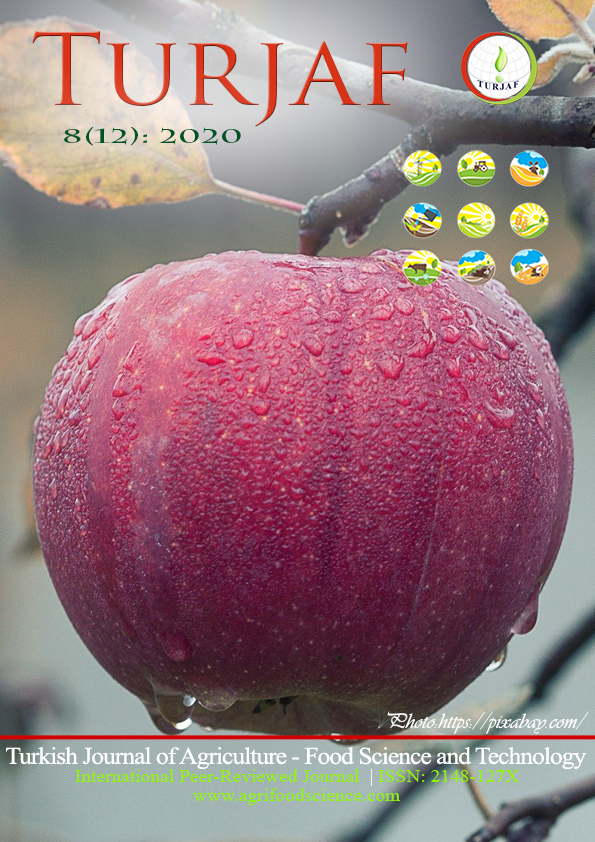The Effects of Different Mycorrhiza Species, Compost and Rock Phosphate Applications on the Growth of Sorghum Plant
DOI:
https://doi.org/10.24925/turjaf.v8i12.2583-2589.3745Keywords:
Sorhgum, Mycorrhizae, Compost, Rock phosphate, YieldAbstract
The aim of this study was to determine the effects of different compost and rock phosphate doses applications with different mycorrhizal species inoculation on sorghum plant growth and nutrient uptake. Dosages 0, 20, 40 gr compost kg-1 soil as were used as compost, and 0, 2, 4 gr rock phosphate/soil as rock phosphate sources. Funnelformis mosseae, F. caledonius, Claroideoglomus etunicatum, Rhizophagus clarus, indigenous and cocktail (mixture) mycorrhizae were used. Shoot and root dry matter, P and Zn concentration and root percentages of mycorrhizal infection were determined. According to the research findings, mycorrhiza inoculation significantly increased the shoot and root dry matter, P, Zn and root infection of sorghum plant more than rock phosphate and compost applications. F. caledonius was determined as the most effective species. While 20 and 40 g compost kg-1 soil doses applications were most effective, it was concluded that the shortage of cultivation time resulted that the rock phosphate may not be sufficiently dissolved for nutrient supply to plant growth.Downloads
Published
26.12.2020
How to Cite
Akpınar, Çağdaş, Demirbaş, A., & Ortaş, İbrahim. (2020). The Effects of Different Mycorrhiza Species, Compost and Rock Phosphate Applications on the Growth of Sorghum Plant. Turkish Journal of Agriculture - Food Science and Technology, 8(12), 2583–2589. https://doi.org/10.24925/turjaf.v8i12.2583-2589.3745
Issue
Section
Research Paper
License
This work is licensed under a Creative Commons Attribution-NonCommercial 4.0 International License.









